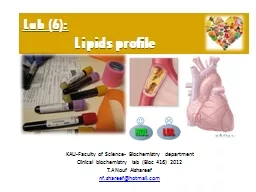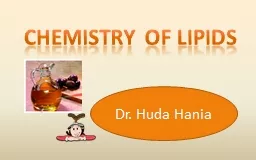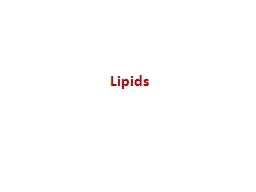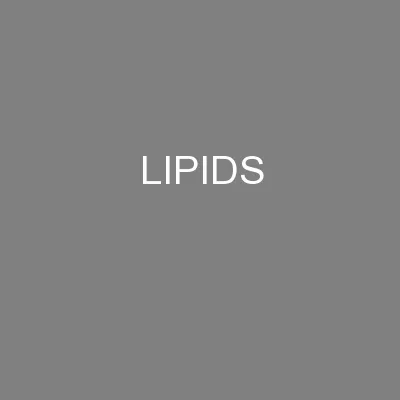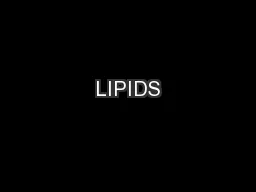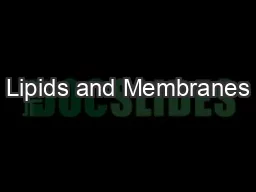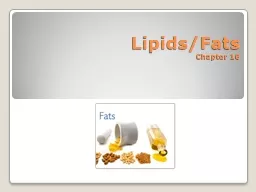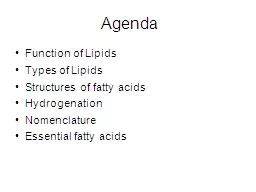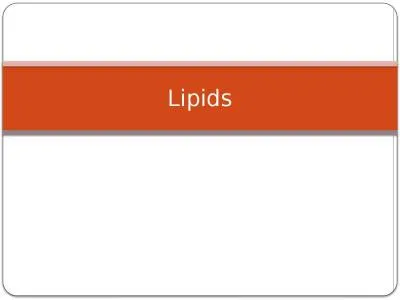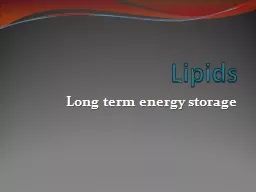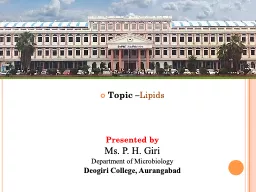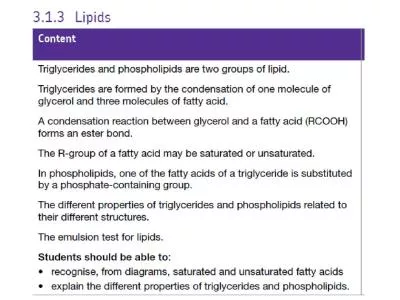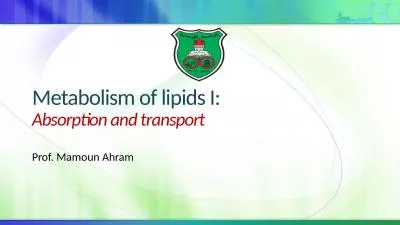PPT-Lab (6): Lipids profile
Author : frostedikea | Published Date : 2020-06-16
KAUFaculty of Science Biochemistry department Clinical biochemistry lab Bioc 416 2012 TA Nouf Alshareef nfshareefhotmailcom Lipids profile Group of biochemical
Presentation Embed Code
Download Presentation
Download Presentation The PPT/PDF document "Lab (6): Lipids profile" is the property of its rightful owner. Permission is granted to download and print the materials on this website for personal, non-commercial use only, and to display it on your personal computer provided you do not modify the materials and that you retain all copyright notices contained in the materials. By downloading content from our website, you accept the terms of this agreement.
Lab (6): Lipids profile: Transcript
KAUFaculty of Science Biochemistry department Clinical biochemistry lab Bioc 416 2012 TA Nouf Alshareef nfshareefhotmailcom Lipids profile Group of biochemical tests involves LDL HDL TG and TC. Lipids. Essential . macronutrients. Provide . energy. Building blocks for cell membranes. Form many important hormones. Help transport fat-soluble nutrients. Contribute to flavor and texture of . food. Dr. Huda Hania. Lipid chemistry . Lipid chemistry . Definition . Fats and Oils (triglyceride) . Waxes. Steroids. Fat- soluble vitamins. Phospholipid. Mono- di glycerides . Lipid compounds including: . Lipids are non-polar. (hydrophobic) . organic compounds, insoluble in water, . soluble in organic . solvents (ether, acetone, . carbontetrachloride. ). . They contain carbon, hydrogen, and oxygen; sometimes nitrogen and phosphorus. . Nature’s flavor enhancer. lipids vs carbohydrates. - . both . Contain: carbon. , hydrogen, and . oxygen. LIPIDS do not:. dissolve in water. provide structure to food products. lipids. Food Examples: . 3.4 What Are Lipids?. Lipids. are a diverse group of molecules that contain regions composed almost entirely of hydrogen and carbon. All lipids contain large chains of nonpolar hydrocarbons. Most lipids are therefore hydrophobic and water insoluble. Pratt & . Cornely. , . Ch. 8. Lipids and Membranes. There is a lot of important biochemistry of lipids.. We won’t cover it all!. The key points for this class have to do with their role in membranes and fat . Lipids are a family of chemical compounds that are a main component in every living cell. They include the following three categories:. Triglycerides. – they include all fats and oils people typically eat.. Structures of fatty acids. Hydrogenation. Nomenclature. Essential fatty acids. Agenda. Functions. Long-term ___ storage. Support organs. Insulation. Fat soluble vitamins A, D, E, K. Types. Physical Property. nonpolar. organic compound insoluble in polar solvent , but . soluble in organic solvents. such as benzene ,ether, chloroform.. Biological role of lipids. :. Lipids are found naturally in all living organisms.. What elements are Lipids composed of?. Carbon (C) . Hydrogen (H). Oxygen (O). A whole lot of Hydrogen!!!!!. Function in Living Organisms. Lipids usually serve one of three functions: . 1. Energy storage. by. Ms. . P. . . H. . Giri. Department of Microbiology. Deogiri . College, Aurangabad. B.Sc. F. Y.. Semester II. Paper No. V. Basic Biochemistry. Unit 2 Lipids. Ms. . Priyanka. H. . Giri. Lipids:. Lipids are . are a diverse group of compounds that are insoluble in water but soluble in organic solvents such as ethanol.. The most common types of lipid are . triglycerides. (sometimes known as true fats or neutral fats), but other important lipids include waxes, steroids and cholesterol.. Lipids. : . are a group of naturally occurring substances include a diverse group of organic compounds including . fats, oils, hormones. , and certain components of membranes (. phospholipids. ). All of these substances relatively insoluble in water but soluble in organic solvents like: chloroform, ether and benzene.. Prof. Mamoun Ahram. Resources. This lecture. Lippincott’s Biochemistry, Ch. 15. What are lipids?. Lipids are heterogeneous, hydrophobic, compartmentalized in membranes, as droplets of triacylglycerol (TAG), or in lipoprotein (LP) particles or, or protein-bound. .
Download Document
Here is the link to download the presentation.
"Lab (6): Lipids profile"The content belongs to its owner. You may download and print it for personal use, without modification, and keep all copyright notices. By downloading, you agree to these terms.
Related Documents

